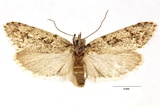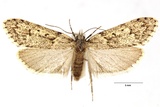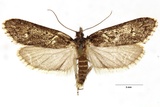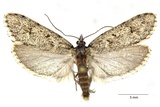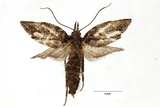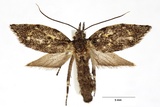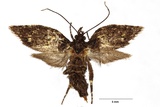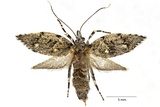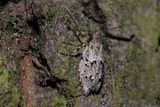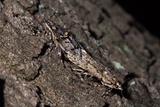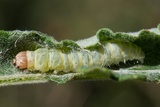Diurnea fagella (Denis & Schiffermüller, 1775) Species
Last modified: Dec. 2, 2024, 12:59 p.m.
A common early spring species throughout Belgium.
Details
- Classification
- Family: Lypusidae > Subfamily: Chimabachinae > Genus: Diurnea > Species: Diurnea fagella
- Vernacular names
- Voorjaarskortvleugelmot (NL), la Teigne du hêtre (FR), Buchenmotte, Sängerin (DE)
- First mention in Belgium
- De Sélys-Longchamps E. 1844. Énumération des insectes Lépidoptères de la Belgique. — Mémoires de la Société royale des Sciences de Liége 2: 1–35. On page 23 (as Diurnea fagella L.). view page
- Status
-
Native
Distribution
Imago
The females have short wings and are unable to fly. The species shows quite some variability in the coloration of the wings: forewing ground colour is most of the time greyish, but some albinistic forms are known, and also some very dark to almost blackish forms.
Bionomics
The egg is oviposited on a twig or shoot of the larval hostplant in March–May.
The larva lives between two leaves spun together. The frass is ejected from the feeding space. The first instars only eat the upper or lower parenchyma leaving the rest of the leaf intact, but later instars consume the entire leaf, starting from the leaf margin. Their development is slow and can take the entire summer.
The species hibernates in the pupal stage, though some authors have observed that the species sometimes hibernates in a prepupal and even larval stage till February or March.
Adults hide during the day on tree trunks, they can easily be observed on the trunks of Fagus, Fraxinus or Quercus. The males come readily to light. The females rest on branches and tree trunks, when disturbed they spread their shortened wings and sway to the ground.
Flight periods
The adults usually fly from early March till the end of April in one genertion a year. Depending on weather conditions, the species may fly sooner or later, but exceptionally sometimes as early as early December.
Observed on
- Host plant (species):
- Fagus sylvatica
- Host plant (genera):
- Quercus, Betula and Salix
- Substrates:
- Polyphagous
Polyphagous species. The caterpillar lives on various deciduous trees and bushes, like Acer, Betula, Carpinus, Corylus, Crataegus, Fagus sylvatica, Malus, Populus, Prunus, Quercus, Rosa, Rubus, Salix, Sorbus, Tilia, and Vaccinium myrtillus.
Habitat
Very different kind of habitats like deciduous and mixed forests, parks, gardens, ruderal places.
